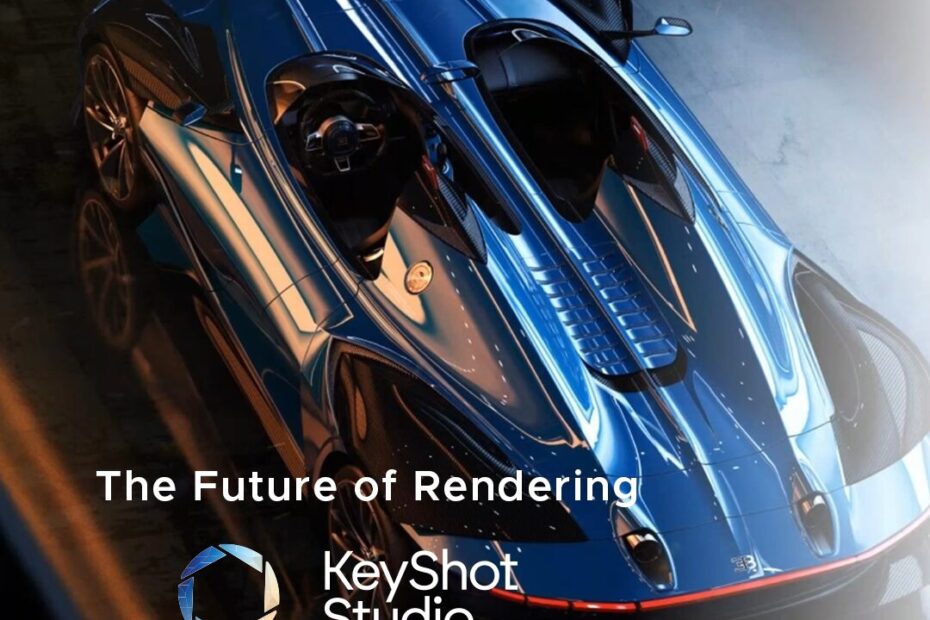In this blog we highlight the latest innovations featured in our recent webinar on KeyShot 2025.2, where we unveiled powerful AI-driven features designed to streamline your workflow, enhance visual quality and help your business achieve more in less time. From delivering faster, cleaner renders with minimal manual effort to suggesting intelligent materials and lighting that expedite design decisions, KeyShot 2025.2 offers the tools you need to gain a competitive edge with quicker turnarounds and higher-quality visuals.
In the first first clip below, Bhumi Taneja, Engineering Solutions Manager at LEAP discusses the features that separates KeyShot from the competition – the intuitive, easy to use interface and beginner friendly workflow. With KeyShot, you don’t have to be a rendering expert to create high quality, photo realistic images of your 3D models. You simply import your CAD model, assign materials using drag and drop, adjust the lighting and camera, and you’re done. Watch the clip below for a quick overview of KeyShot’s key features and benefits.
The excitement surrounding KeyShot 2025.2 is well-deserved, as this release introduces a range of impressive new features that enhance the rendering experience. One of the standout additions is the incorporation of Pantone’s Dualities colour collection, now available in both cotton and plastic palettes within the KeyShot colour library. This significant expansion provides users with 175 new colours, enabling more precise and realistic render quality.
Another noteworthy improvement is the overhaul of the colour picker interface, which has been redesigned for enhanced usability. The new colour picker allows designers to easily identify linked and multi-color selections, eliminating the frustration of unintended colour changes across different parts of a model. This intuitive interface saves valuable time, reducing troubleshooting efforts and streamlining the overall user experience.
Additionally, the new version includes support for AMD’s latest Radeon RX7000 and 9000 series graphics cards, alongside Strix Halo chips. This shift means that users are no longer confined to NVIDIA graphics cards to achieve high-performance rendering; AMD users can now enjoy similar capabilities, offering greater flexibility in hardware choice.
Together, these features make KeyShot 2025.2 one of the most exciting releases in recent years, promising to elevate rendering workflows for users. In the clip below, Bhumi discusses these exciting new features and benefits they provide.
New in KeyShot 2025.2 is the Light Layers feature, which allows users to have precise control over lighting on individual objects within a scene without the need to relight the entire setup. This functionality makes it possible to selectively illuminate an element while protecting other parts from light exposure, an option not typically available in real-world photography. With light layers, users can achieve their desired visual effects more easily and efficiently, adjusting light angles to highlight specific details without casting unwanted light on other areas.
Another notable 2025.2 addition is randomisation nodes, which add realism by allowing for variations in color, texture and glossiness among similar objects. In the clip below, Bhumi provides an example using a series of identical shipping containers. Instead of rendering each container individually, users can employ randomisation nodes to introduce subtle differences in appearance, ensuring a more natural look in the final scene. This capability enables users to create visually diverse outputs efficiently while maintaining the same base material properties.
Overall, these new features empower users to streamline their workflows and produce visually compelling, realistic renderings with greater ease. Watch the clip below to see them in action.
The standout feature introduced in KeyShot 2025.2 is the integration of AI, which dramatically enhances the rendering process. With AI capabilities, users can generate stunning rendered images in just minutes – images that would otherwise take hours of conventional work. For example, users can create a beautifully designed living room by simply providing a prompt, and the AI will generate a realistic scene incorporating various materials such as steel and wood with remarkable finishing. This efficiency is further supported by three distinct AI modes: Imagine, Background, and Restyle.
- Imagine mode is particularly useful for brainstorming, allowing users to generate concept images from scratch based on their prompts.
- Background mode helps users quickly find a complementary background for a model, ensuring that lighting and perspective are consistent.
- Restyle mode enables users to alter the visual style of their designs, applying different materials or looks without significantly changing the model’s geometry.
Each of these modes opens new creative possibilities, allowing designers to explore various styles and concepts quickly and effectively.
In the clip below Bhumi provides examples of how Imagine mode can also be used to create seamless textures and logos, expanding the scope of what’s achievable within KeyShot.
The second AI mode introduced in KeyShot 2025.2 is Background mode which allows users to effortlessly place their models in a variety of captivating environments. With Background ode, the possibilities are virtually limitless; users can create as many backgrounds as they desire simply by inputting their model and the corresponding prompt. The AI also allows for the addition of realistic details, such as dirt on the wheels of a car and subtle adjustments in lighting and blurriness to convey depth, such as soft fog over a landscape. Each background can be tailored to enhance the overall composition, ensuring that elements like terrain and weather conditions complement the model perfectly.
In the following clip, Bhumi provides examples of how Background mode can almost instantaneously create compelling backgrounds to complement your 3D renders.
The third AI mode introduced in KeyShot 2025.2 is Restyle mode, a powerful feature that allows users to transform their models with ease, simply by modifying prompts. This versatility extends to various models, from vehicles to consumer products and even human figures, where you can adjust attributes such as skin tones or the figure’s age to achieve the desired look.
Restyle mode also enables the generation of industrial design sketches, offering options for both 2D and 3D renderings, as well as watercolour art-style outputs. Restyle mode truly exemplifies the efficiency and creativity that AI brings to the rendering process in KeyShot.
The introduction of AI features in KeyShot 2025.2 represents a significant leap in functionality, making the design process more efficient and effective and ensuring that users can achieve high-quality results with greater ease.
To leverage the new AI capabilities in KeyShot 2025.2, users will need to switch from a perpetual license to a subscription model. The AI enables unlimited image generation at no extra cost, with NVIDIA RTX graphics cards being the fastest option – Luxion recommends a minimum of 16 GB for optimal performance.
To begin using the AI features, simply click on AI Shots within KeyShot, download the necessary components and start the AI engine. Clear prompts are essential for effective results, as vague instructions may yield mixed outcomes.
To finish, Bhumi elaborates on the licensing and hardware requirements to get started using AI within KeyShot and explains why users should consider upgrading to KeyShot 2025.2 to take advantage of all of the fantastic new features discussed here.
We trust you found this information helpful and hope you are excited as we are about the amazing new features KeyShot 2025.2 brings. If you would like more information or assistance with KeyShot, please don’t hesitate to contact us.

